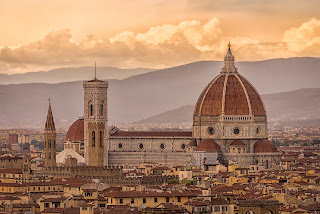Diva described as Italy’s first film star
 |
| Francesca Bertini appeared in almost 150 movies in her career |
Between her screen debut in 1907 and her effective retirement in 1935, Bertini appeared in 139 titles. Her last appearance came in 1976, at the age of 84, when the director Bernardo Bertolucci persuaded her to accept a cameo in his epic historical drama, Novecento (1900).
Bertini, Lyda Borelli and Pina Menichelli were regarded as Italy’s three biggest female stars of the silent movie years and though Borelli came to be seen as the most talented of the three, there is no doubt that Bertini was a woman of outstanding ability. She has been described as Italy's first film star.
Her most famous film, Assunta Spina, a 1915 production, not only saw her take the title role but write scripts and direct many of the scenes, introducing a level of realism into the performances that was ahead of its time.
Bertini’s birth was registered in 1892 at an orphanage in Florence as Elena Taddei, although it is unclear whether Taddei was the name of her father. Her mother was said to be Adelina di Venanzio Fratiglioni, an unmarried woman who was thought to have been an actress herself. After 1910, when her mother married Arturo Vitiello, she was known as Elena Seracini Vitiello.
Vitiello was thought to be a furniture dealer who had connections with the theatre in Naples as a propman and Bertini’s first experiences of acting came in the southern city. In fact, her debut came in a stage production of Assunta Spina, a short story that its Neapolitan author, Salvatore Di Giacomo, had turned into a play.
 |
| Francesca Bertini in a scene from her most successful movie, Assunta Spina |
The success of such films as Histoire d’un Pierrot (1914), Sangue bleu (1914), Nelly la gigolette (1915) and La signora delle camelie (1915) saw Bertini able to negotiate substantial pay deals and significant artistic input.
In interviews later in life, Bertini declared her pride in Assunta Spina, claiming she was the first to suggest shooting scenes in the street rather than on stage sets and using members of the public as extras, to a degree that it should be seen as a forerunner of the Neorealism that put Italian cinema on the map in the postwar years.
Bertini had the opportunity to take her career to Hollywood in 1920 as the Fox Film Corporation offered her a contract. However, she turned it down. Recently married to Paul Cartier, a wealthy Swiss banker, she wanted to move with him to Switzerland.
After 10 films in 1920 alone, Bertini significantly reduced her output once married, winding down her career further once Mussolini’s Fascists began to introduce censorship. After the third of three adaptations of Odette, based upon the play by Victorien Sardou, in 1935, she went 15 years without making another screen appearance.
When Bertolucci invited Bertini to appear in Novecento, part of a cast that included Robert De Niro, Gerard Depardieu, Donald Sutherland, Laura Betti, Stefania Sandrelli, Alida Valli and Burt Lancaster, it was taken as a tribute to her own talent and to the stars of the silent movie era.
Bertini returned to Rome after the death of her husband and spent her final years in the Italian capital.
 |
| The Florence duomo dominates the skyline of Italy's beautiful Renaissance city |
Florence, Bertini’s birthplace, remains one of the most beautiful cities in Europe, largely on account of its wealth of art and architecture, the visible legacy of its history as the cradle of the Renaissance. Its duomo - the Cattedrale di Santa Maria del Fiore - with its enormous dome by Filippo Brunelleschi and campanile by Giotto, towers above the city and is the dominant feature of almost every cityscape. The focal point of the city is the Piazza della Signoria, which contains several important sculptures and statues, including a copy of Michelangelo's David - the original is in the Galleria dell'Accademia - outside the Palazzo Vecchio, Bandinelli's Hercules and Cacus, just to the right of the David, and the Nettuno by Ammannati. Under the Loggia dei Lanzi, to the right of Palazzo Vecchio, the statue of Perseus holding Medusa's head, by Benvenuto Cellini, alongside Giambologna's Rape of the Sabines.
 |
| A reconstruction of ancient Rome is part of the Cinecittà complex in the south of the city |
The centre of the movie industry in Rome is Cinecittà, the largest film studio in Europe, spreading over an area of 100 acres with 22 stages and 300 dressing rooms. Situated six miles south of the city centre, it is the hub of the Italian film industry. Built during the Fascist era under the personal direction of Benito Mussolini and his son, Vittorio, the studios were bombed by the Allies in the Second World War but were rebuilt and used again in the 1950s for large productions, such as Ben Hur. These days a range of productions, from television drama to music videos, are filmed there.
Also on this day:
54: The death of Claudius, Roman emperor
1815: The execution of Napoleon’s chief aide in Italy, Joachim Murat
1884: The birth of anarchist Mario Buda
1899: The birth of sportsman and entrepreneur Piero Dusio
(Florence picture by Andrea Spallanzani from Pixabay)
No comments:
Post a Comment